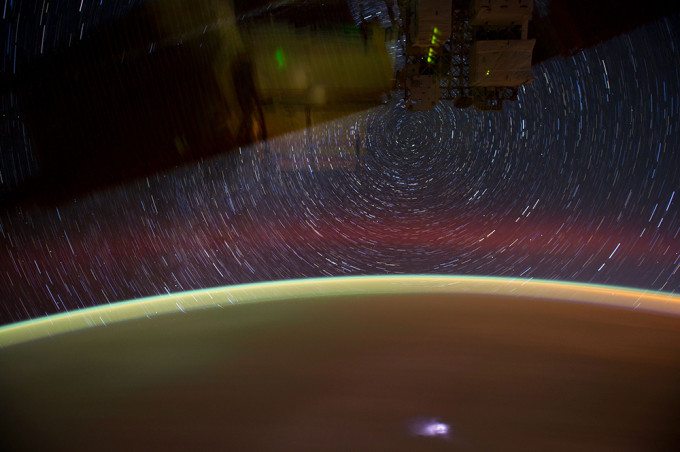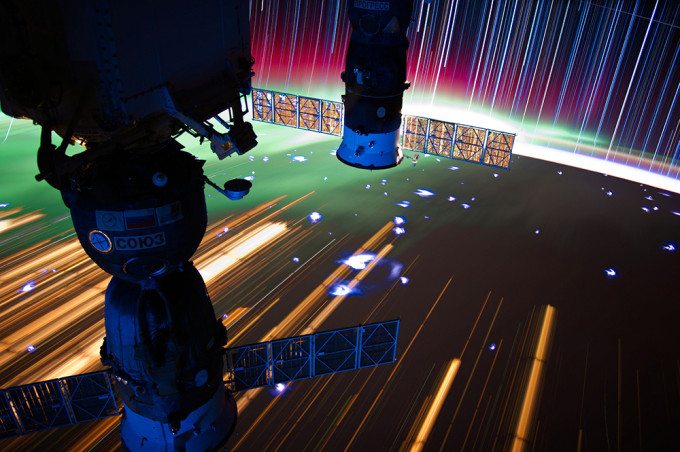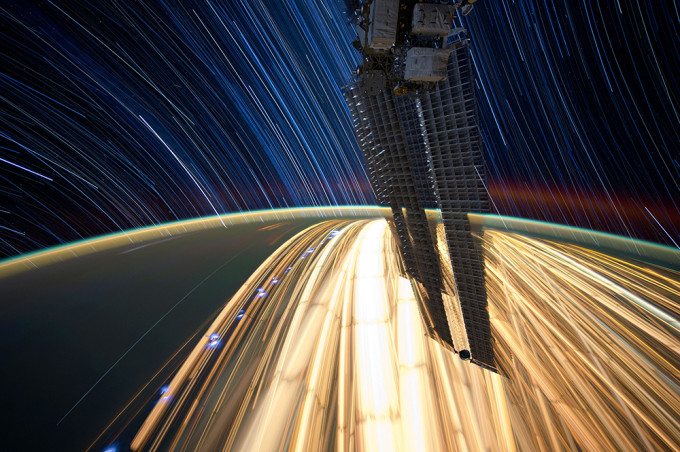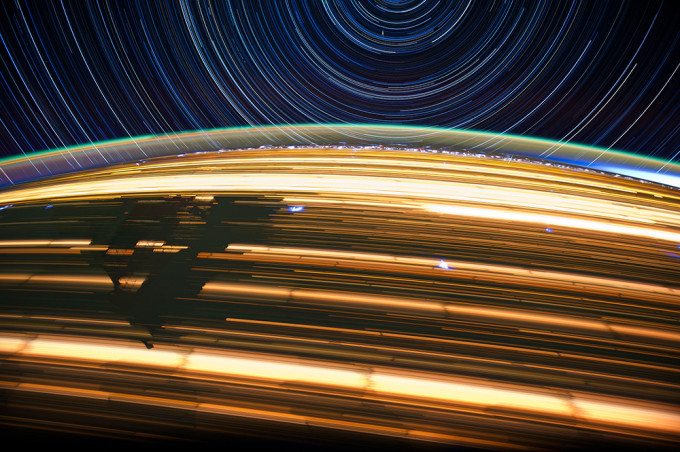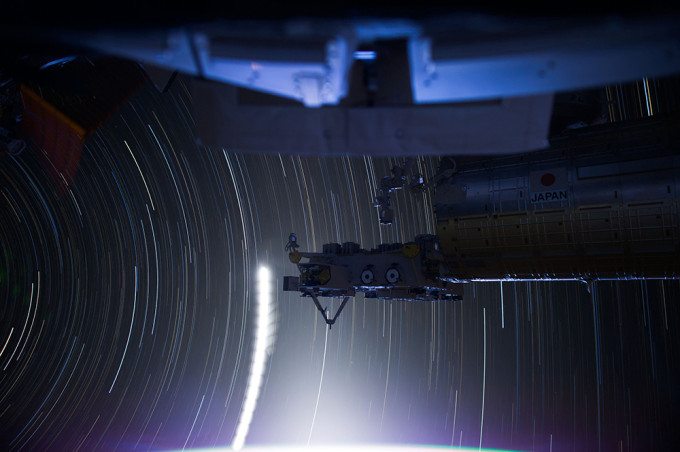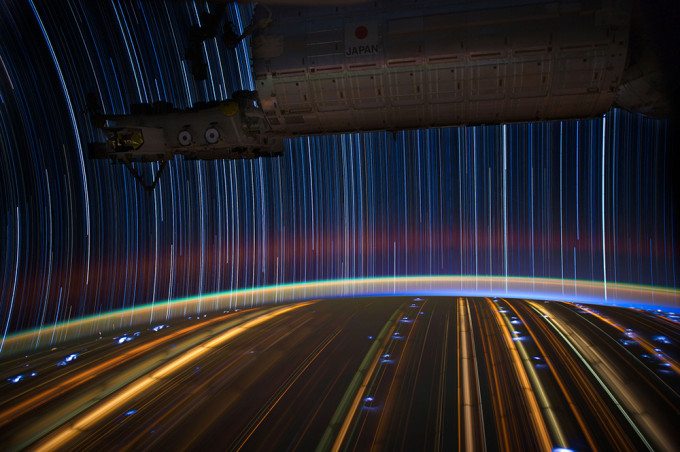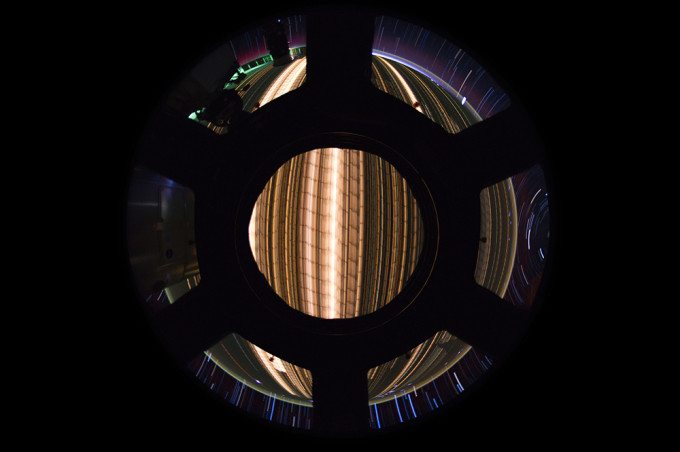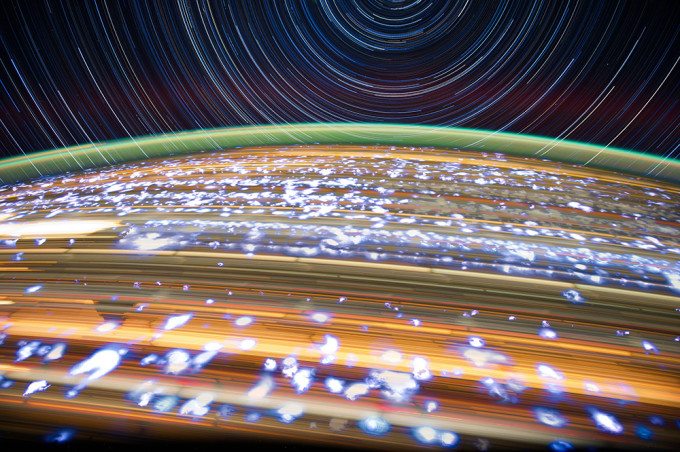Last Updated on 09/23/2014 by Chris Gampat
Taking a timelapse of the starry nights sky is a relatively simple procedure down here on earth. All you need is a tripod, to setup your camera and apply the 600 rule (by which you divide 600 with your focal length to figure out your shutter speed). But what if you’re hurtling through space in orbit 240 miles above the surface of Earth?
As you might have guessed it takes a little bit more technical knowhow and no photographer has yet to match NASA astronaut Don Pettit’s gorgeous series of star trails. Originally taken on March 17, 2012, these give us a unique perspective from the Earth-orbiting International Space Station.
Don, who was also a flight engineer, took several long-exposure photo sessions while he was aboard the space station during Expedition 31. While orbiting above earth Don took several 30-second exposures. The NASA astronaut would then digitally splice together these individual frames into 10 to 15-minute long exposures. The image you see above is a composite of 47 images all rolled into one.
Read on to see the rest of the story.
“With modern digital cameras, 30 seconds is about the longest exposure possible due to electronic detector noise effectively snowing out the image,” Don wrote in a statement.
“To achieve the longer exposures […] I take multiple 30-second exposures [and] then ‘stack’ them using imaging software,” he said. “Thus producing the longer exposure.”
The results really speak for themselves. We can see a mix of stunning light trails created by the metropolises sprinkled around the world and the aurora borealis cresting over Earth’s atmosphere.


